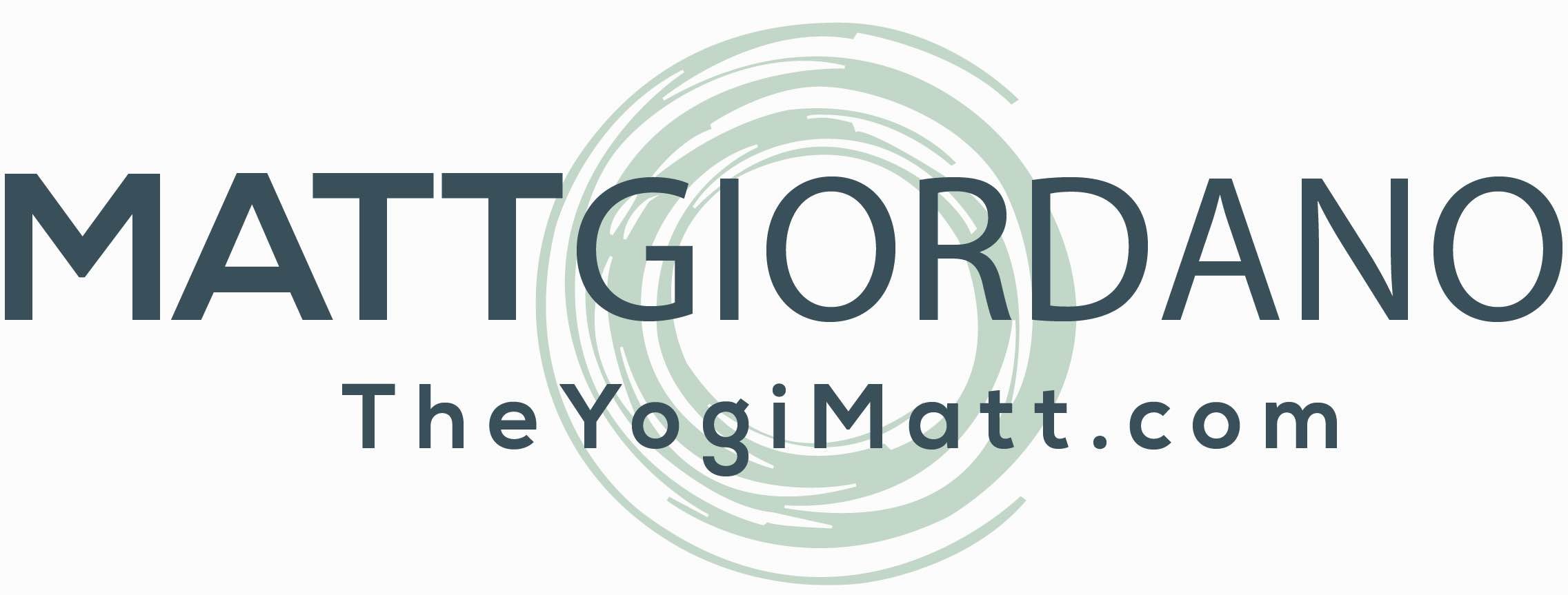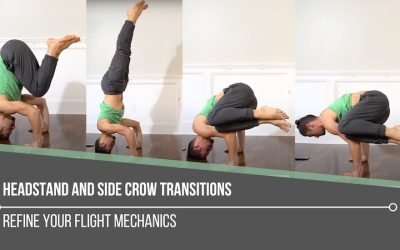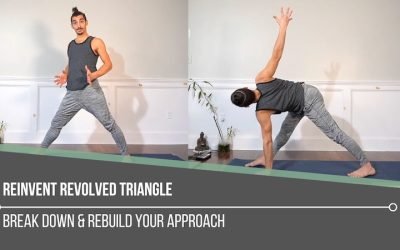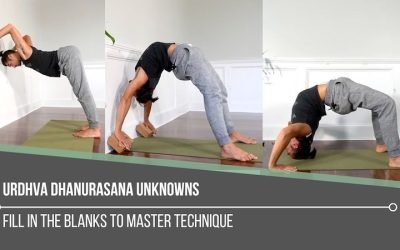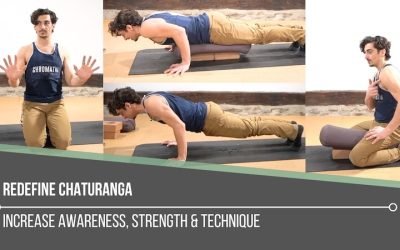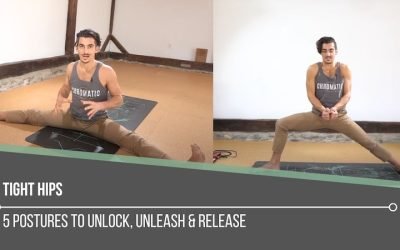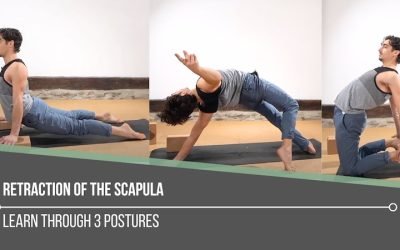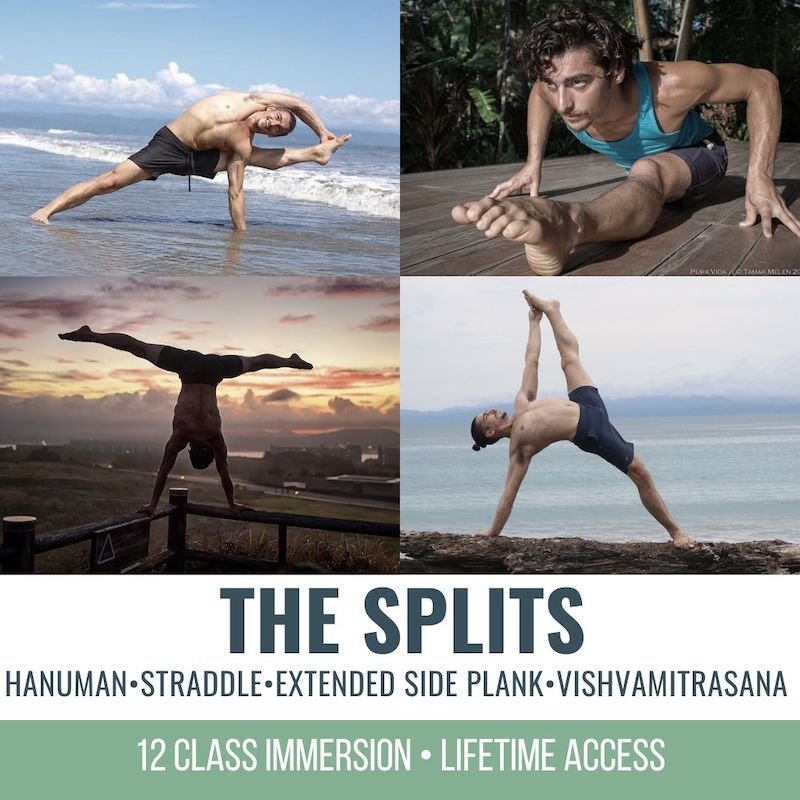Headstand and Side Crow TransitionsPARSVA BAKASANAHEADSTAND AND SIDE CROW TRANSITIONS Mastery begins with mechanics, especially when it comes to headstand and side crow transitions. Each posture on its own demands control, coordination, and a deep understanding of...
Sciatic Nerve Pain
Sciatic Nerve Pain
hip strength
SCIATIC NERVE PAIN
The sciatic nerve runs from the lower back through the glutes and down the leg, making it one of the longest nerves in the body. Because of its length, it can easily become irritated or pinched, leading to pain anywhere along its path—whether in the lower back, hip, buttocks, knee, or even the ankle. Sciatica is a common diagnosis when the exact source of pain is unclear, as nerve irritation can sometimes be mistaken for joint or muscle issues. The key to preventing sciatic pain is maintaining the health of the muscles and joints along the nerve’s pathway. By keeping these areas strong, mobile, and balanced, we can reduce compression and irritation, keeping the sciatic nerve happy and pain-free.
THERAPEUTIC'S
REGISTRATION NOW OPEN
- 10 Chromatic Yoga practices with founder Matt Giordano
- Full length 75 minute classes
- Each Yoga class explore’s how to maintain optimal health in areas of the body that are prone to injury and chronic pain.
- Highly informative and educational classes for both practitioners and teachers.
- Each class includes warm ups, sun salutations, standing postures and cool down
- How to use props to modify or enhance benefits of each asana.
- Technique, biomechanics, and alignment at the forefront
- 12 Continuing Education hours with Yoga Alliance
- 12 Accredited Hours with the Chromatic School of Yoga
- Step-by-Step instruction for increased accessibility
- Improve strength, balance, flexibility, and proprioception
- Disclaimer #1: This is not designed as “Yoga Therapy” and will not diagnose or treat any specific ailments or injuries.
- Disclaimer #2: The purpose of this immersion is for education, exploration and understanding your options: there are no hard and fast solutions to injury’s that can be solved solely by practicing yoga
- Disclaimer #3: If you have an acute injury, be sure you have a doctors approval prior to practicing this immersion
FIND IT FIRST IN CHAIR POSE
One of the most common cues we might hear for Chair pose in a yoga class is to “lengthen your spine”. It’s not often that we might be encouraged to find the natural curve in the spine, but once we implement the cues Matt offers, we quickly begin to understand the benefits. Chair pose and others like it become more than a shape.
When it comes to sciatic nerve pain Matt suggests we find the natural curve of the spine in efforts to support the strengthening of the muscles that surround the nerve. In today’s video, we learn how to execute an isometric contraction within the alignment of the natural curve of the spine, which helps the piriformis to activate the deep rotators of the glute muscles. Matt teaches us that this is a great position so that we don’t experience compression of the nerve.
WATCH THE VIDEO
SCIATIC NERVE PAIN: FINDING THE NATURAL CURVE OF THE SPINE
CRESCENT POSE
What’s nice about this posture is that the lumbar is typically in a natural curve due to the positioning of the legs. For sciatic nerve pain, Matt shows us how to apply a technique where we can strengthen the muscles of the buttocks of the front leg. For this technique we ever so slightly draw the tailbone down (still maintaining the curve), while pressing the front heel down. This again, ignites the glutes and deep rotators of the hips.
One thing we need to be aware of is that we can too easily fall into the anterior tilt of the pelvis. Yes, this places our body in the position of the natural curve, but it may not be in the “active” position required for support and strength in the lower back. To remedy this, Matt demonstrates a lift though the abdominals and a little extra engagement through the glutes.
200 HOUR ONLINE TEACHER TRAINING
GET CERTIFIED & DEEPEN YOUR YOGA PRACTICE
- Deepen your yoga practice
- Build confidence speaking in front of groups in person and online
- Learn foundational class structures and templates
- Learn techniques for a wide range of yoga postures
- Get certified and highly qualified to teach yoga
- Yoga Alliance Globally Recognized Certification Program
CHECK THE PRIFORMIS
In pigeon pose, we create a deep stretch in the piriformis, as it lengthens in deep hip flexion. However, Matt demonstrates how to re-engage these muscles for more control. He does this by pressing the front knee down and dragging it back, while pulling the back knee towards the front knee. To deepen this engagement, he rises slightly, creating buoyancy in the pose—pulling up out of passive flexibility and contracting the hip muscles. Since the back leg naturally creates a lumbar curve, there’s already a built-in lift. Adding a pulsing movement wakes up the deep glute muscles, training fast-twitch fibers for better stability. This approach transforms pigeon from a passive stretch into a dynamic, strength-building pose. Once again, this is all in support of cultivating a strong, healthy environment to deter the possibility of sciatic nerve pain.
300 HOUR ONLINE TEACHER TRAINING
GET 500 HOUR CERTIFIED AS A MASTER TEACHER
Master your skill set as a teacher through refined techniques, anatomy, biomechanics, sequencing, philosophy, meditation techniques, theming, yoga business, and much more!
- Get 500 hour certified
- Learn anatomy, biomechanics, asana techniques
- Expand your teaching skills
- Masterful sequencing and verbal delivery
- Learn meditation and breathwork techniques
- Transformative tools: theming, dharma talks, satsang
FROM COMPRESSION TO CONTROL
Sciatic nerve pain can be frustrating and persistent, but through exploration and intentional muscle activation, we can work toward relief and prevention. Instead of passively stretching, Matt’s approach encourages us to engage, stabilize, and strengthen the muscles surrounding the sciatic nerve. From Chair pose to Pigeon, we shift from simply finding shapes to actively supporting our bodies. By maintaining the natural curve of the spine, strengthening the glutes, and creating muscular balance, we reduce the risk of compression and irritation. It’s more about control, resilience, and finding strength within movement. With these tools, we can move with greater ease, keep the sciatic nerve happy, and step onto and off of our mats with more confidence.
There’s still time to register for lifetime access to Matt’s current online immersion called Therapeutics. Dive deeper into the understanding of pain paired with solutions in this 10 class immersion.
The 200 Hr. Teacher Training: Click Here to See the Next Start Date
The 300 Hr. Advanced Teacher Training: Click Here to See the Next Start Date
Article by Trish Curling
Video Extracted From: Therapeutics Immersion
ONLINE ANATOMY COURSE
- Accessible, exciting, and easy to learn
- Anatomy and biomechanics for yoga
- Appropriate for both teachers and students
- Learn joint alignment vs pose alignment
- Demystify yoga poses and transitions
- Release aches and pains
- Learn how to avoid common injuries
- Caters to all levels with modifications and props
- 20 hours Continued Education Credits with Yoga Alliance
- 20 hours toward Chromatic Yoga Certification and 300 Hour
- Lifetime access
Continue Learning
Headstand and Side Crow Transitions
Reinvent Revolved Triangle
Reinvent Revolved TriangleTRIKONASANAREINVENT REVOLVED TRIANGLE “Now twist!” Sounds easy enough—until we realize the complexity hidden within the cue. Revolved Triangle is far more than just a twist. It’s a balance challenge, a hamstring and IT band stretch, a spinal...
Urdhva Dhanurasana Unknowns
Urdhva Dhanurasana UnknownsALIGNMENTURDHVA DHANURASANA UNKNOWNS Let’s take a pause from what we think we know about Wheel Pose and consider the Urdhva Dhanurasana unknowns. Often, we hear the cue, “Just press up into Wheel,” and we do—without questioning the subtle...
Redefine Chaturanga
Redefine ChaturangaALIGNMENTREDEFINE CHATURANGA To redefine Chaturanga, we first have to be willing to challenge what we think we already know. Many of us were taught a narrow-hand, elbows-tight variation of the pose—elbows hugging the ribs, hands close beneath the...
Tight Hips
Tight HipsHIP MOBILITYTIGHT HIPS When working to release tight hips, most people instinctively go straight for deep stretches. But one often overlooked area that holds a surprising amount of tension is the adductorS (the inner thigh muscles) that connect to the...
Retraction Of The Scapula
Retraction Of The ScapulaSHOULDER ACTIONSRETRACTION OF THE SCAPULA It may appear that scapular retraction holds less weight in finding deeper backbends, but this action can be quite significant in what we experience when it comes to strength, stability, and...
THE FREE TECHNIQUE PACK
When You Subscribe, You Will Get Instant Access to
- the Technique Pack: 15 yoga pose breakdowns
- exclusive online course discounts
- exclusive blogs and videos
